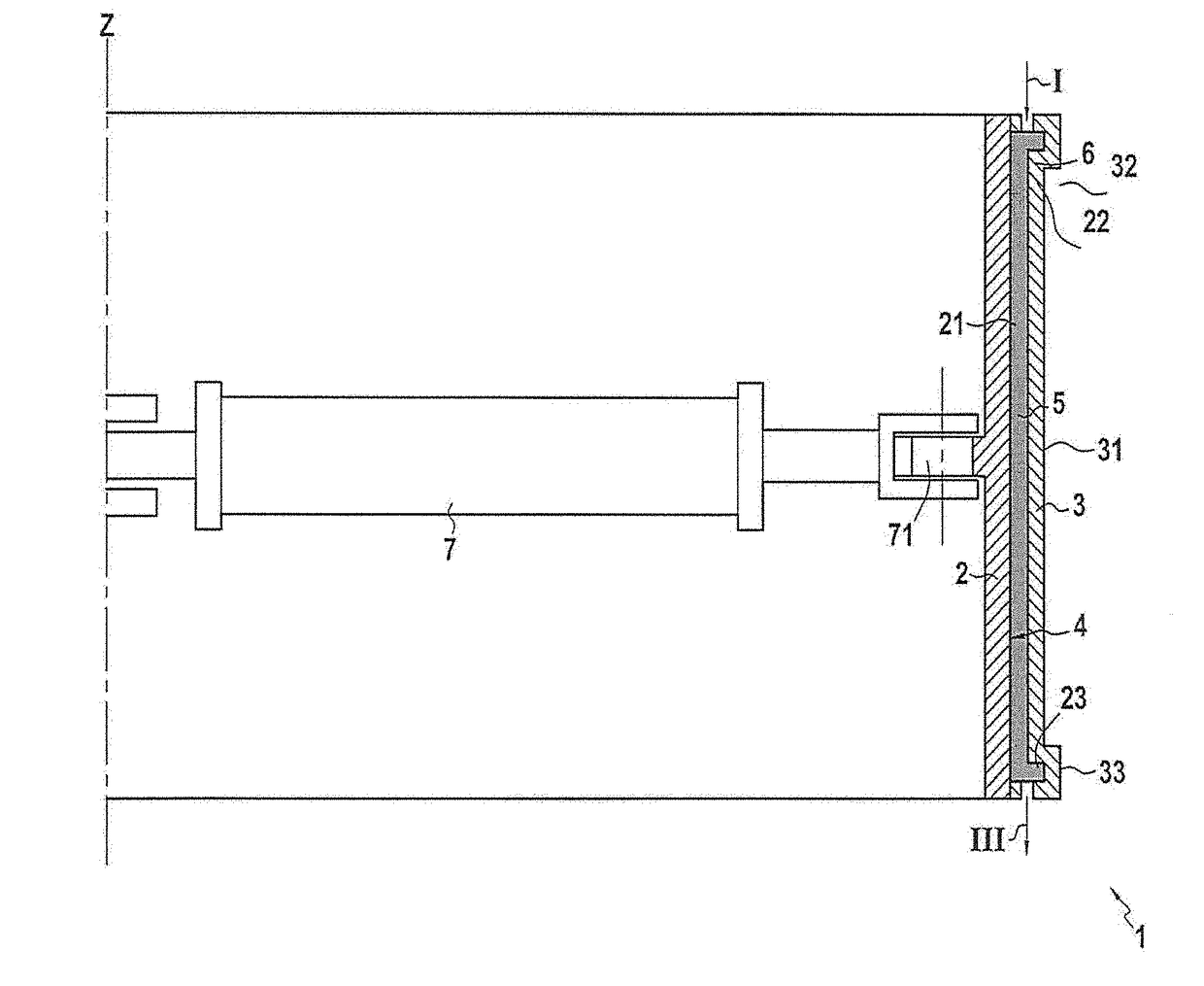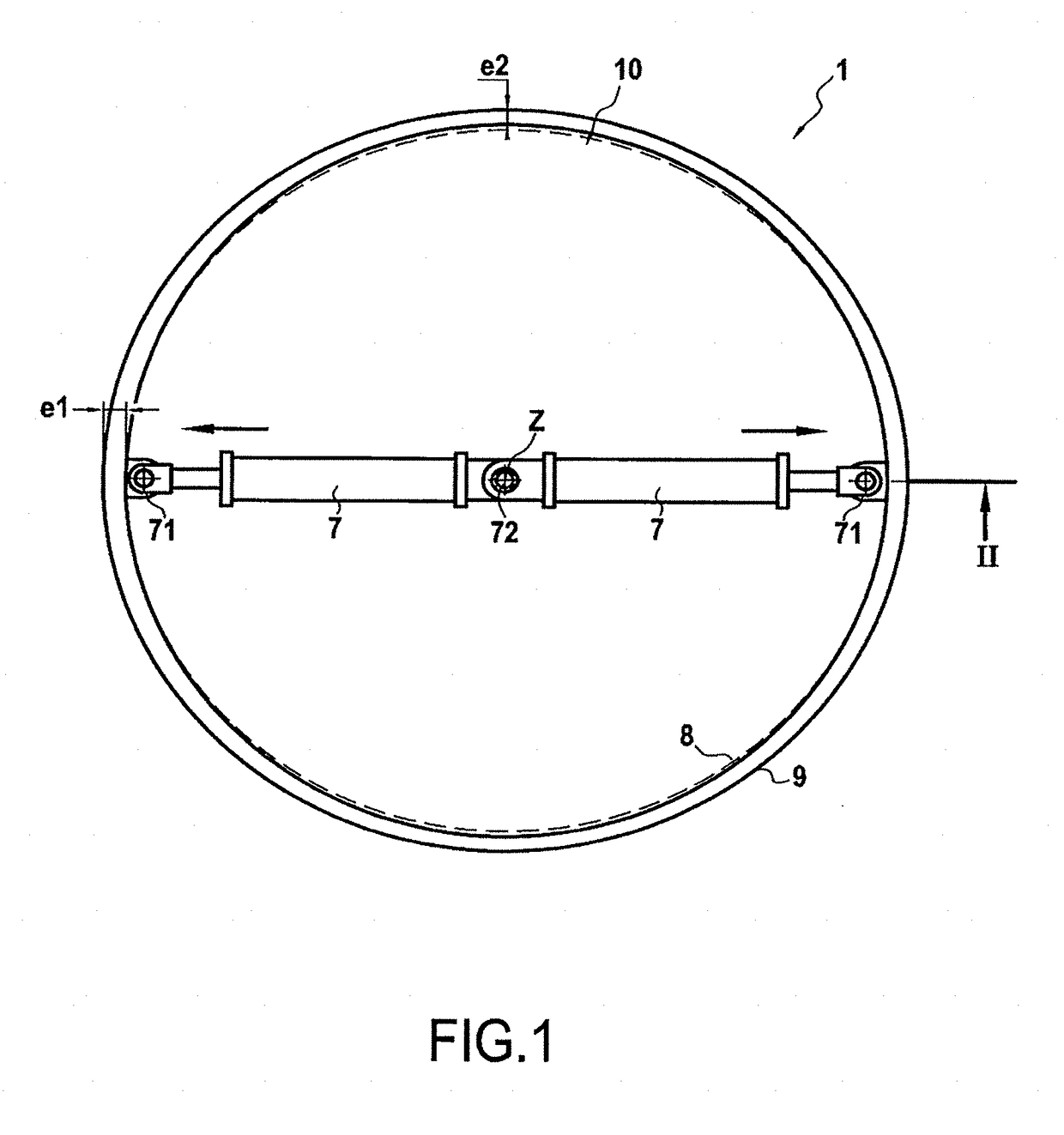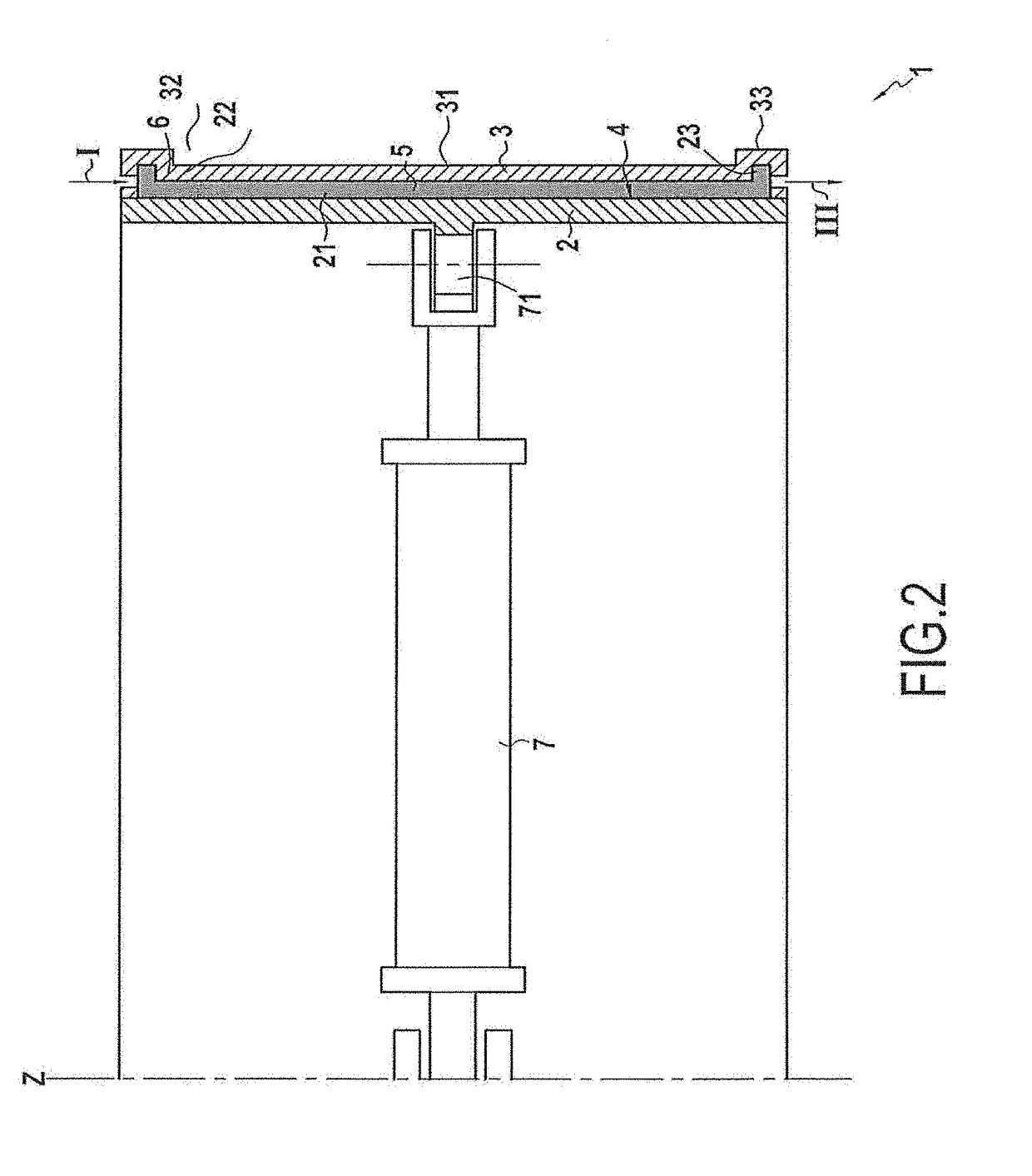Device and a method for fabricating a part by injection molding
a technology of injection molding and parts, which is applied in the direction of machines/engines, other domestic objects, mechanical equipment, etc., can solve the problems of complex and expensive compensation mold operation, inability to determine the shape of compensation mold, and deformation of extracted parts
- Summary
- Abstract
- Description
- Claims
- Application Information
AI Technical Summary
Benefits of technology
Problems solved by technology
Method used
Image
Examples
Embodiment Construction
[0047]FIG. 1 shows an injection molding device comprising in particular a mold 1 that is a body of revolution, e.g. of circular or cylindrical shape and presenting a section that is annular.
[0048]As can be seen in FIG. 2, which is an axial section on plane II-II of FIG. 1, such a mold 1 is made up of a support 2 and a countermold 3 which between them define a mold cavity 4, which presents a shape that is circular or annular.
[0049]The support 2 is to act as a support for a fiber preform 5 of a part that is to be made. By way of example, the preform 5 is a preform made of carbon fibers with three-dimensional or multilayer weaving between warp yarns and weft yarns.
[0050]In this example, the support 2 has an outer annular surface with the same profile as the part that is to be made, in this example the surface of a fan casing.
[0051]The countermold 3 is placed facing the support 2 of the mold 1 so as to constitute the closed volume of the mold cavity 4. In the example shown, the preform ...
PUM
| Property | Measurement | Unit |
|---|---|---|
| shape | aaaaa | aaaaa |
| temperature | aaaaa | aaaaa |
| mechanical strength | aaaaa | aaaaa |
Abstract
Description
Claims
Application Information
 Login to View More
Login to View More - R&D
- Intellectual Property
- Life Sciences
- Materials
- Tech Scout
- Unparalleled Data Quality
- Higher Quality Content
- 60% Fewer Hallucinations
Browse by: Latest US Patents, China's latest patents, Technical Efficacy Thesaurus, Application Domain, Technology Topic, Popular Technical Reports.
© 2025 PatSnap. All rights reserved.Legal|Privacy policy|Modern Slavery Act Transparency Statement|Sitemap|About US| Contact US: help@patsnap.com



